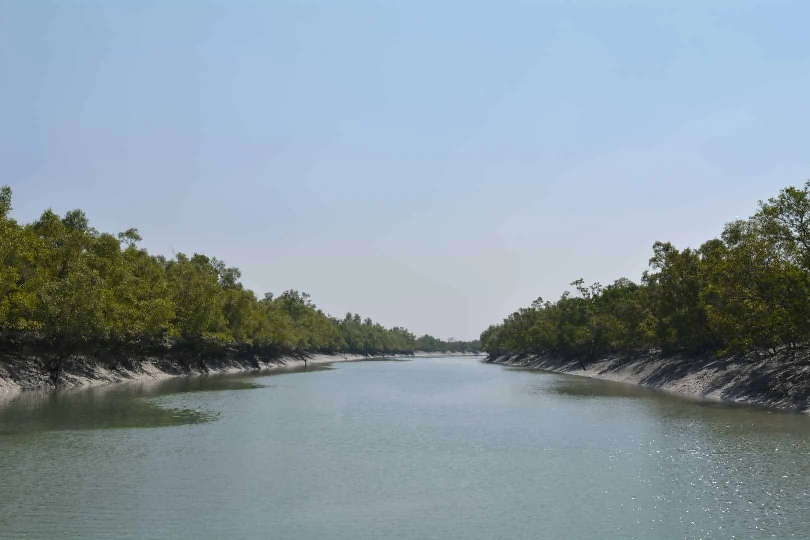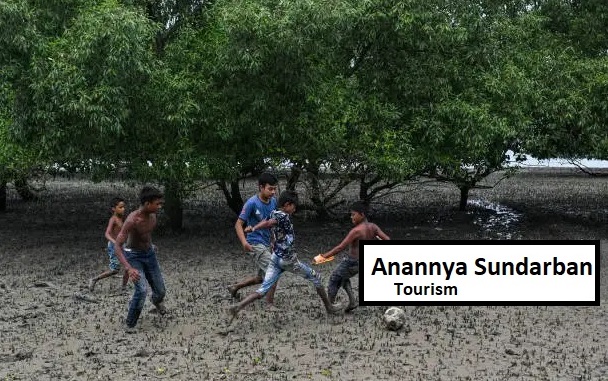Table of Contents
What is a Mangrove Forest? The Coastal Guardians
Imagine a forest that thrives not on solid ground, but in the shifting, salty interface where land meets the sea. This is a mangrove forest—a unique and vital ecosystem comprised of salt-tolerant trees and shrubs that grow in coastal saline or brackish water. These aren't your typical trees; they are superheroes of the plant world, equipped with incredible adaptations.
Key Adaptations of Mangroves:
-
Aerial Roots (Pneumatophores): These bizarre-looking, finger-like roots stick out of the water and mud to breathe oxygen for the plant, as the waterlogged soil is devoid of it.
-
Salt Filtration: Mangroves have special roots that can filter out up to 90% of the salt from seawater, allowing them to drink freshwater in a saline environment.
-
Prop Roots: Some species, like the iconic Sundari tree, have large, arching prop roots that anchor the tree firmly in the soft, unstable mud, like stilts, and also help with gas exchange.
Why are Mangrove Forests So Important? The Unsung Heroes
Mangroves are far more than just curious-looking trees. They are powerhouses of ecological services:
-
Natural Storm Barrier: They act as a first line of defense, absorbing the impact of storm surges, tsunamis, and cyclones, protecting coastal communities and preventing erosion.
-
Carbon Sinks: They are incredible at sequestering and storing carbon dioxide from the atmosphere, fighting climate change more effectively per hectare than most tropical rainforests. This is called "blue carbon."
-
Water Purifiers: Their root systems filter pollutants and trap sediments, improving water quality and clarity for seagrass beds and coral reefs nearby.
-
Nurseries of the Sea: The dense root networks provide a safe, nutrient-rich breeding ground for countless juvenile fish, crabs, shrimp, and other marine species, which are crucial for commercial fisheries.
-
Biodiversity Hotspots: They support a vast array of life, from birds and reptiles to mammals and insects.
The Crown Jewel: The Sundarbans Mangrove Forest
The Sundarbans is the embodiment of everything a mangrove forest can be. Straddling the delta of the Ganges, Brahmaputra, and Meghna rivers on the Bay of Bengal, it is the largest contiguous mangrove forest on Earth, shared between India (~40%) and Bangladesh (~60%).
Why is the Sundarbans a UNESCO World Heritage Site?
UNESCO designated the Indian part of the Sundarbans a World Heritage Site in 1987 for its outstanding universal value. It meets two key criteria:
Criterion (ix): It is an outstanding example of significant ongoing ecological and biological processes. The delta is still evolving, and the ecosystem represents a fascinating process of land formation and colonization by mangrove species.
Criterion (x): It contains the most important and significant natural habitats for in-situ conservation of biological diversity, including those containing threatened species of outstanding universal value.
What Makes the Sundarbans So Special?
-
The Royal Bengal Tiger (Panthera tigris tigris): This is the only mangrove forest in the world where tigers live. These tigers are iconic and have unique adaptations, such as being excellent swimmers and having a slightly smaller size. They are the apex predator of this ecosystem.
-
The Sundari Tree (Heritiera fomes): The forest gets its name from this dominant and economically valuable tree species. "Sundarban" literally translates to "beautiful forest" in Bengali.
-
Incredible Biodiversity: Beyond tigers, it's home to endangered species like the Irrawaddy dolphin, estuarine crocodiles, king cobras, and over 260 bird species.
-
A Dynamic Landscape: The geography is constantly changing with the tides, creating a labyrinth of tidal waterways, small islands (mudflats), and dense forests, making it a mysterious and awe-inspiring destination.
Threats and Conservation: Protecting a Legacy
This precious ecosystem faces severe threats:
-
Climate Change: Rising sea levels and increased salinity threaten the specific balance the mangroves need.
-
Cyclones: More frequent and intense storms cause widespread damage.
-
Human-Wildlife Conflict: Encounters between tigers and the local communities who depend on the forest for their livelihood are a tragic reality.
-
Pollution & Illegal Logging: Industrial pollution and the felling of trees for resources remain persistent problems.
Conservation efforts are multi-faceted, involving government policies, creating protected areas, community-based initiatives to provide alternative livelihoods, and ongoing scientific research.
Experience the Wonder Responsibly
Visiting the Sundarbans is a privilege. It’s a humbling experience to witness raw nature and its intricate balance. If you go, choose eco-friendly tour operators who follow strict guidelines to minimize disturbance to wildlife and support the local economy.
The Sundarbans is not just a forest; it's a life-support system. It's a shield, a nursery, a carbon vault, and a testament to nature's resilience. Protecting it is not an option; it's a necessity for the planet and future generations.







.gif)
.gif)

No comments yet
Be the first to share your thoughts!